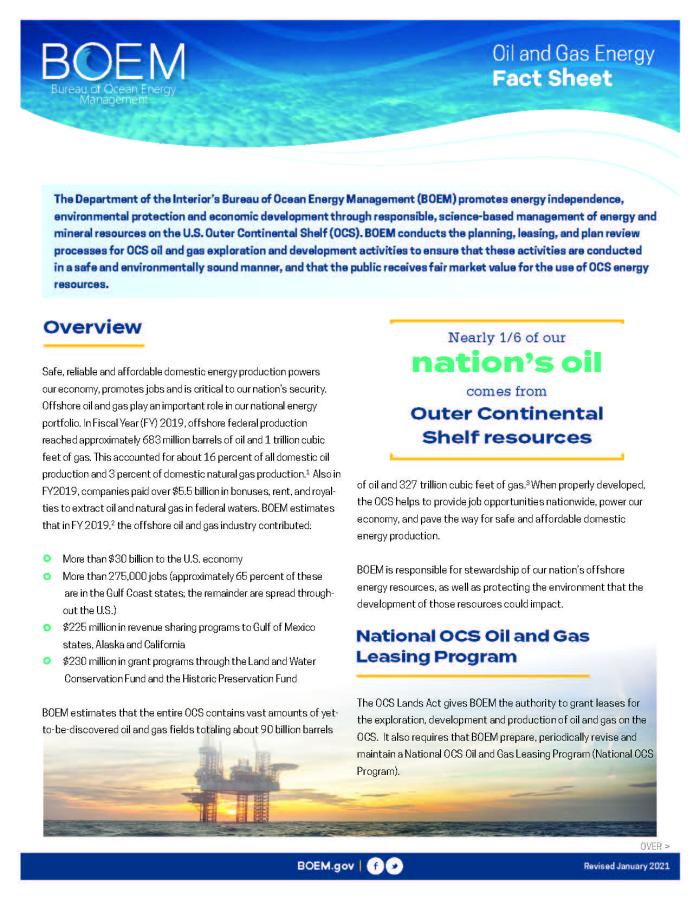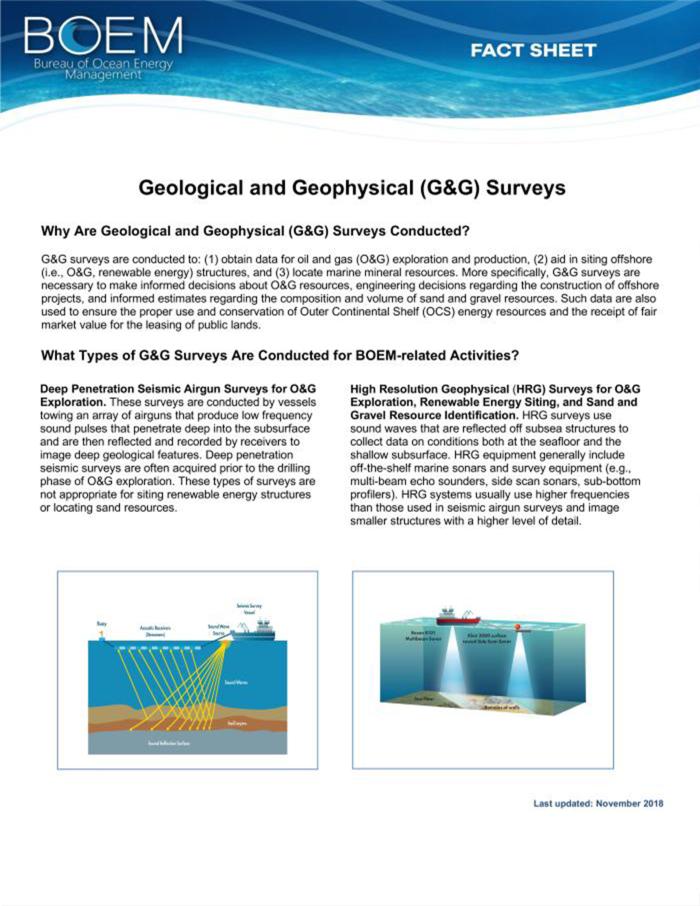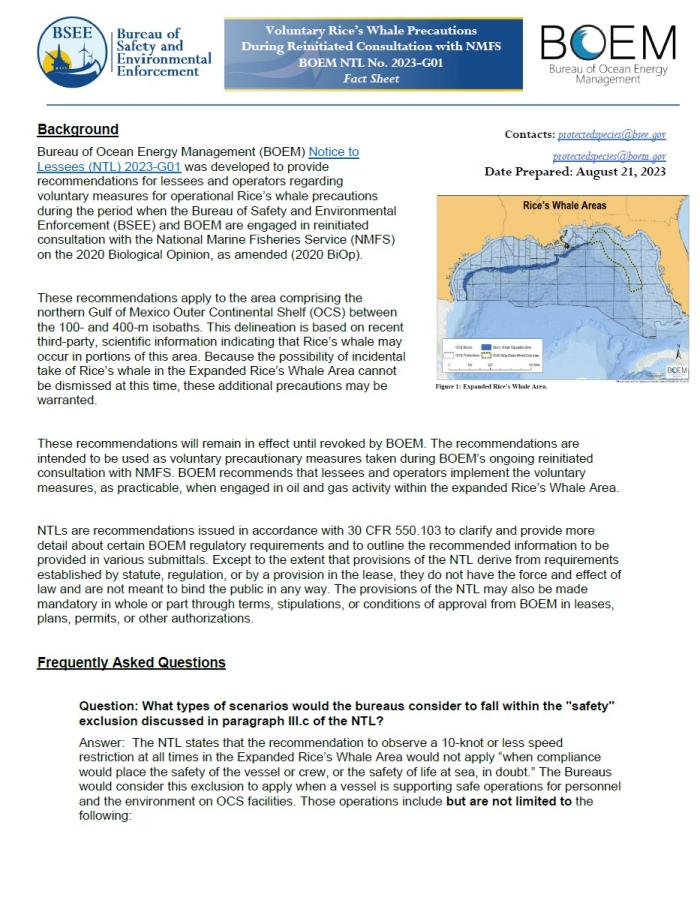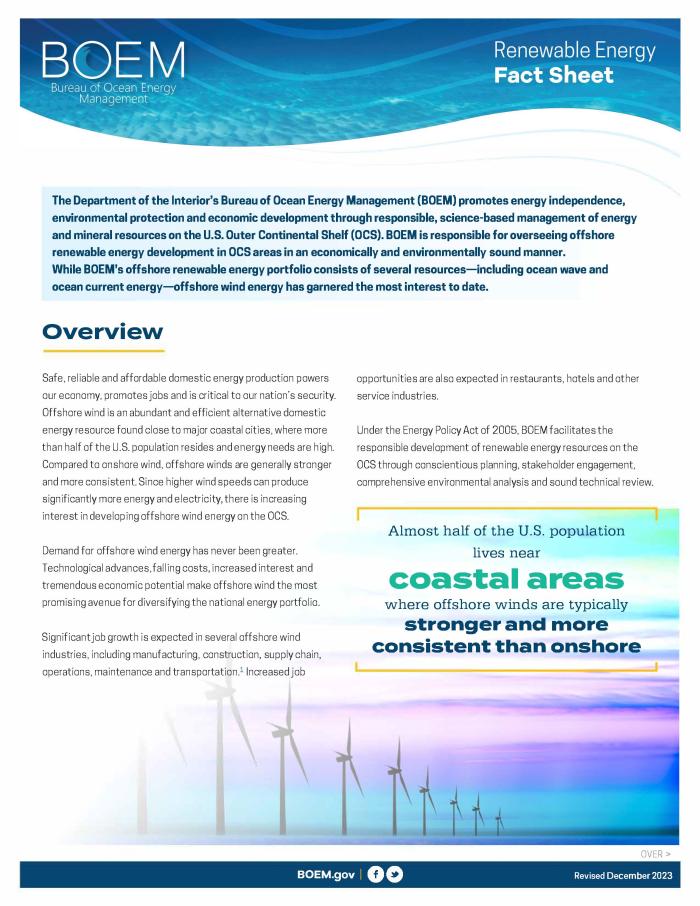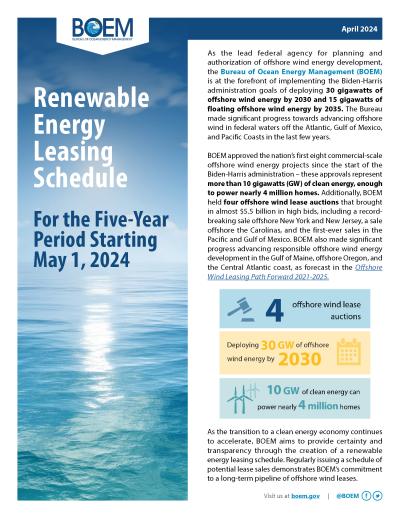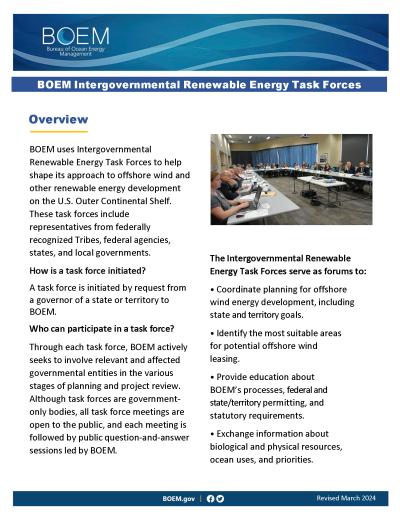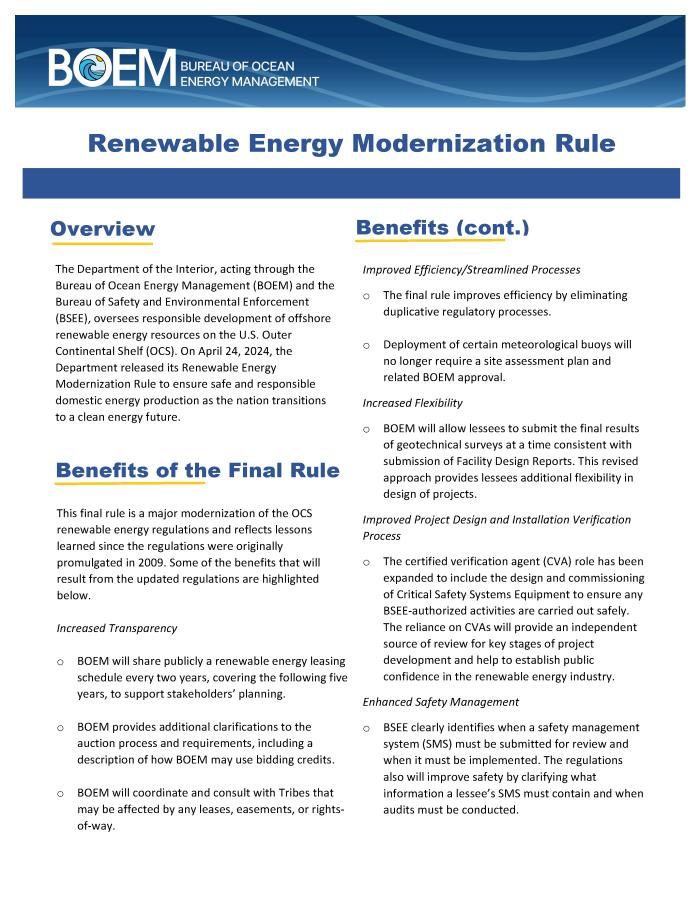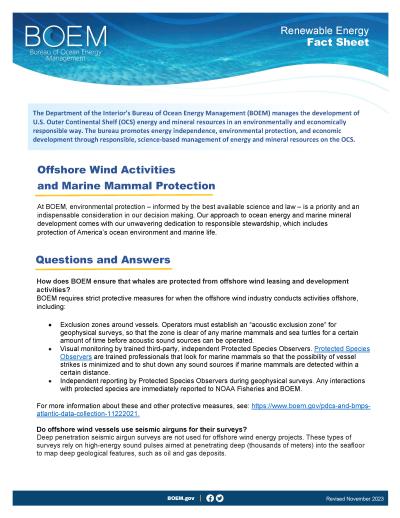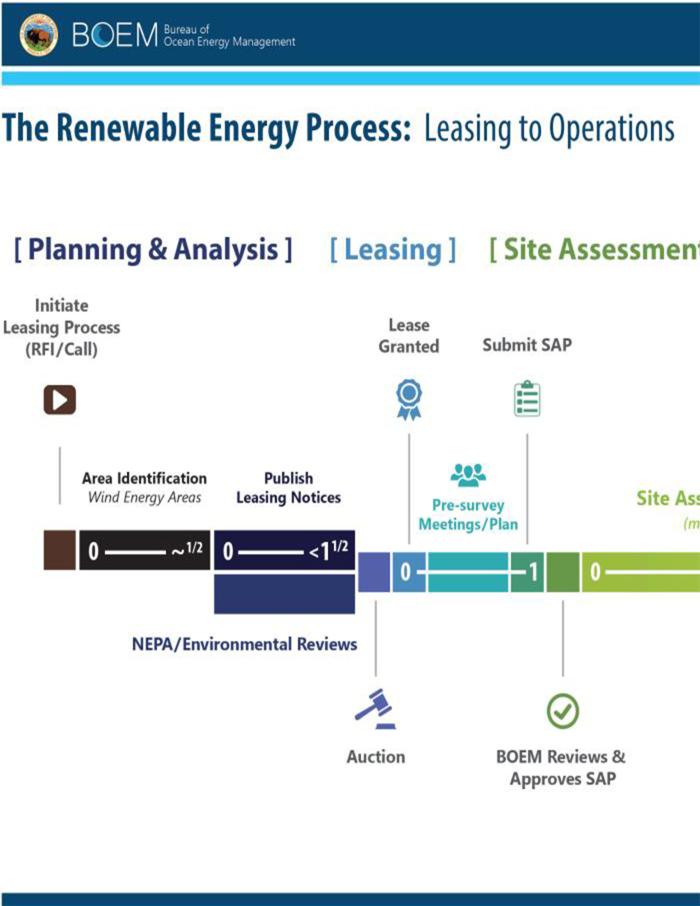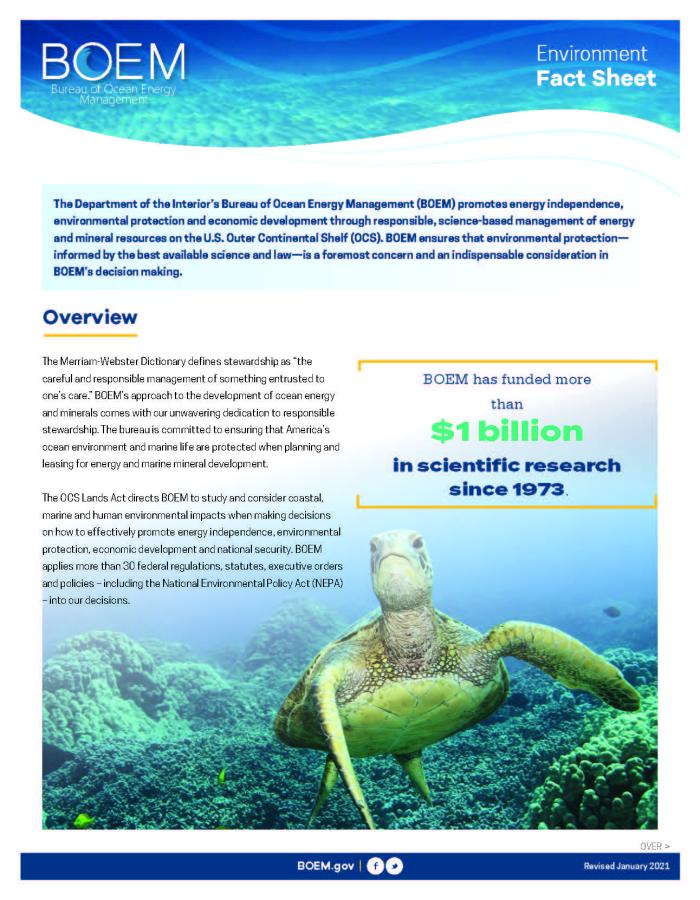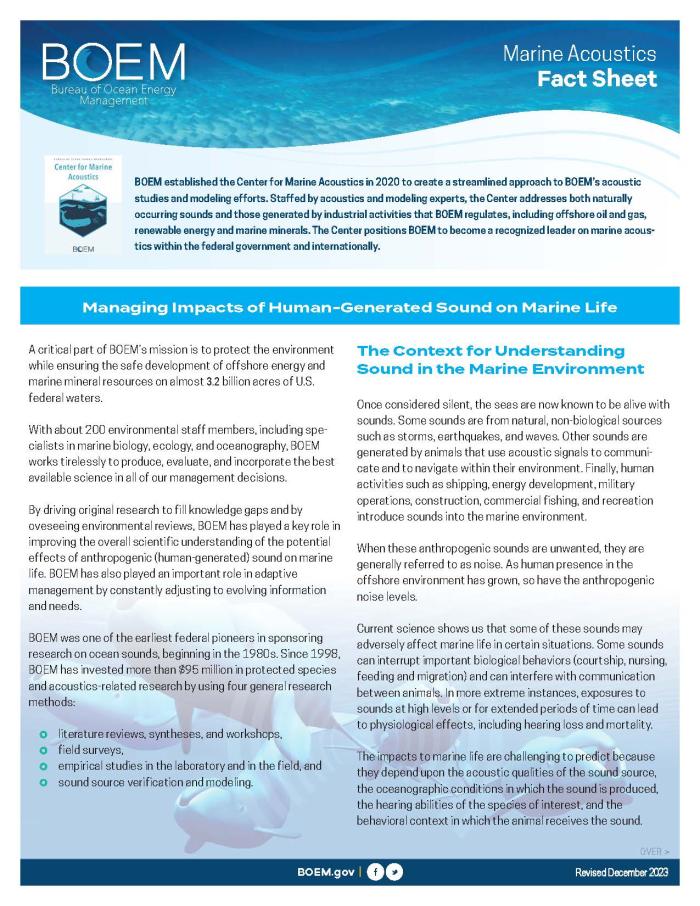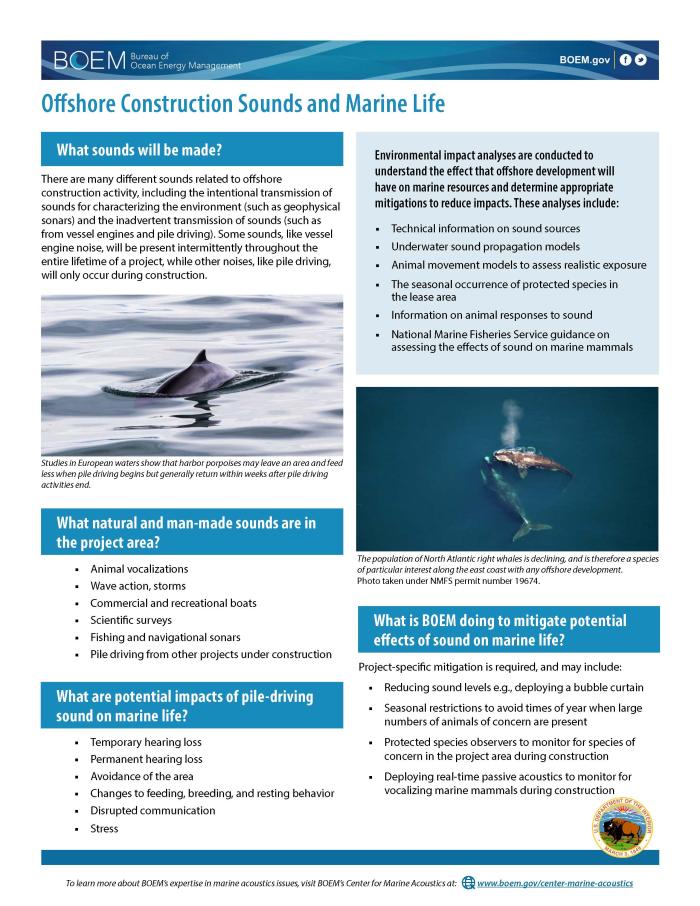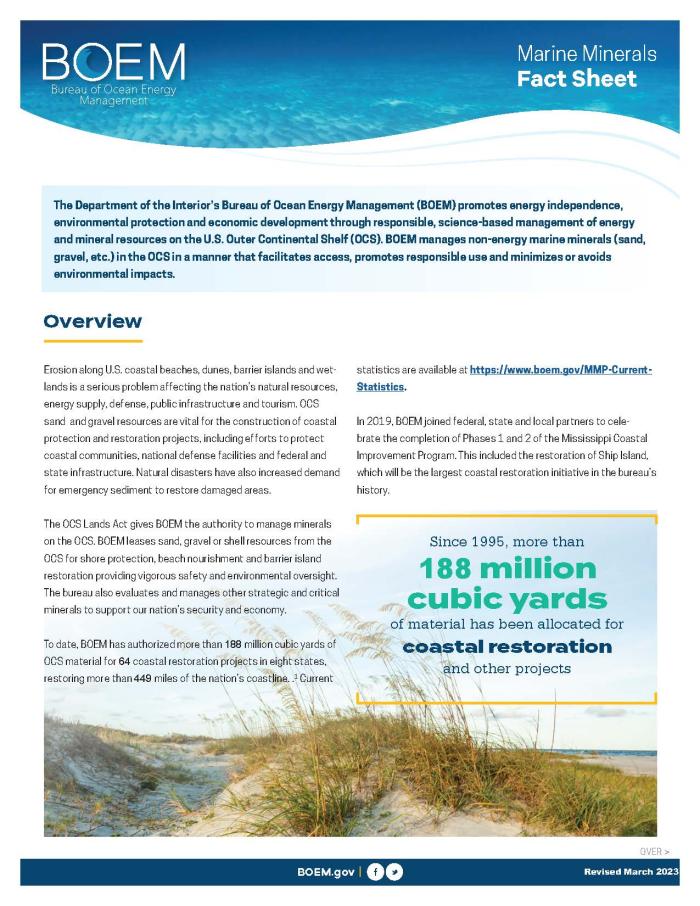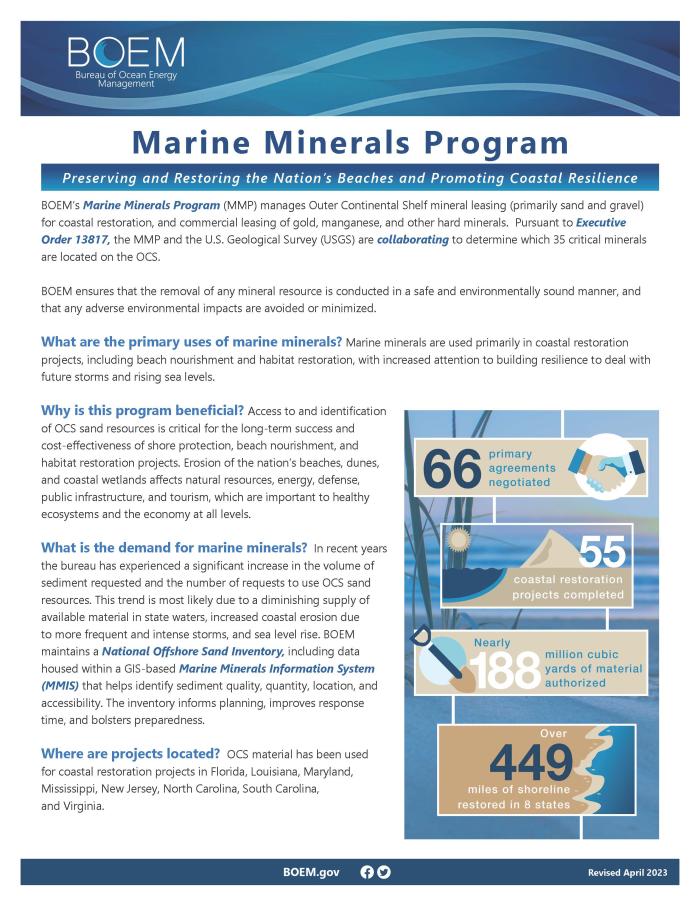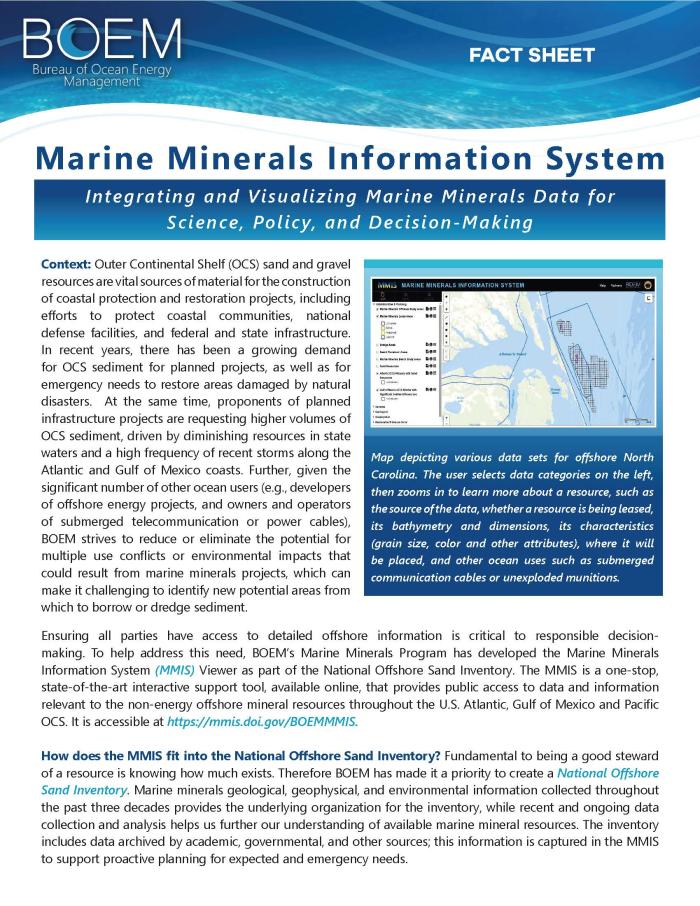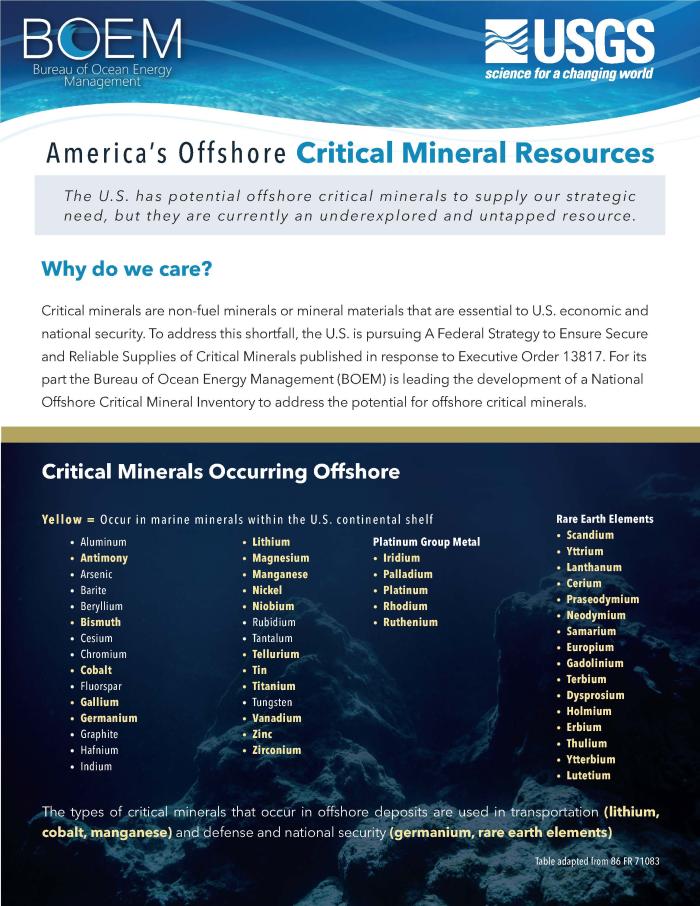Safe, reliable and affordable domestic energy production powers our economy, promotes jobs and is critical to our nation’s security. Offshore oil and gas play an important role in our national energy portfolio. | |
Geological and Geophysical (G&G) Surveys G&G surveys are conducted to: (1) obtain data for oil and gas (O&G) exploration and production, (2) aid in siting offshore (i.e., O&G, renewable energy) structures, and (3) locate marine mineral resources. More specifically, G&G surveys are necessary to make informed decisions about O&G resources, engineering decisions regarding the construction of offshore projects, and informed estimates regarding the composition and volume of sand and gravel resources. | |
Voluntary Rice's Whale Precautions During Reinitiated Consultation with NMFS - BOEM NTL No. 2023-G01 BOEM Notice to Lessees (NTL) 2023-G01 was developed to provide recommendations for lessees and operators regarding voluntary measures for operational Rice’s whale precautions during the period when the Bureau of Safety and Environmental Enforcement (BSEE) and BOEM are engaged in reinitiated consultation with the National Marine Fisheries Service (NMFS) on the 2020 Biological Opinion, as amended (2020 BiOp). |
BOEM is responsible for overseeing offshore renewable energy development in OCS areas in an economically and environmentally sound manner. While BOEM's offshore renewable energy portfolio consists of several resources—including ocean wave and ocean current energy—offshore wind energy has garnered the most interest to date. | |
Renewable Energy Leasing Schedule For the Five Year Period Starting May 1, 2024 | |
BOEM Intergovernmental Task Force BOEM uses Intergovernmental Renewable Energy Task Forces to help shape its approach to offshore wind and other renewable energy development on the U.S. Outer Continental Shelf. These task forces include representatives from federally recognized Tribes, federal agencies, states, and local governments. | |
Renewable Energy Modernization Rule Renewable Energy and Alternative Uses of Existing Facilities on the Outer Continental Shelf direct final rule, issued by the Department on January 31, 2023. This final rule eliminates unnecessary requirements for the deployment of meteorological (met) buoys; increases survey flexibility; improves the project design and installation verification process; establishes a public Renewable Energy Leasing Schedule; reforms BOEM’s renewable energy auction regulations; tailors financial assurance requirements and instruments; clarifies safety management system regulations; revises other provisions; and makes technical corrections. This final rule advances the Department’s energy policies in a safe and environmentally sound manner that will provide a fair return to the U.S. taxpayer. | |
Offshore Wind Activities and Marine Mammal Protection At the Bureau of Ocean Energy Management (BOEM), environmental protection—informed by the best available science and law—is a priority and an indispensable consideration in our decision making. Our approach to ocean energy and marine mineral development comes with our unwavering dedication to responsible stewardship, which includes protection of America’s ocean environment and marine life. | |
The Renewable Energy Process: Leasing to Operations For any proposed OCS development, BOEM evaluates the potential impacts on ocean users, historic and cultural resources and the marine environment. BOEM uses a multi-phased process to grant access to ocean areas that are suitable for wind energy development that consists of the following phases: Planning and Analysis, Leasing, Site Assessment and Construction and Operations. |
BOEM ensures that environmental protection—informed by the best available science and law—is a foremost concern and an indispensable consideration in BOEM’s decision making. | |
Managing Impacts of Human-generated Noise on Marine Life Through research and environmental reviews, BOEM plays a key role in improving the overall scientific understanding of the potential effects of anthropogenic, or human-generated, sound on marine life. This fact sheet describes BOEM’s adaptive management approach to developing and applying science for decisions on sound.. | |
Offshore Construction Sounds and Marine Life There are many different sounds related to offshore construction activity, including the intentional transmission of sounds for characterizing the environment (such as geophysical sonars) and the inadvertent transmission of sounds (such as from vessel engines and pile driving). BOEM conducts environmental impact analyses to understand the effect that offshore development will have on marine resources and determine appropriate mitigations to reduce impacts. |
BOEM manages non-energy marine minerals (sand, gravel, etc.) in the OCS in a manner that facilitates access, promotes responsible use, and minimizes or avoids environmental impacts. | |
Marine Minerals Program - Fast Facts BOEM’s Marine Minerals Program is the sole federal program responsible for leasing non-energy resources (primarily sand and gravel) from the OCS, most often used in beach nourishment and coastal restoration projects. The bureau invests in applied environmental research to ensure that the removal of any mineral resource is done in a safe and environmentally sound manner. | |
Marine Minerals Information System (MMIS) The MMIS offers a one-stop, state-of-the-art interactive tool that provides public access to data and information relevant to offshore sand and gravel mineral resources. These resources are vital for the construction of coastal protection and restoration projects. This award-winning tool allows users to download, visualize and explore more than 20 data layers covering more than 30 years of research. | |
The U.S. has potential offshore critical minerals to supply our strategic need, but they are currently an underexplored and untapped resource. |


